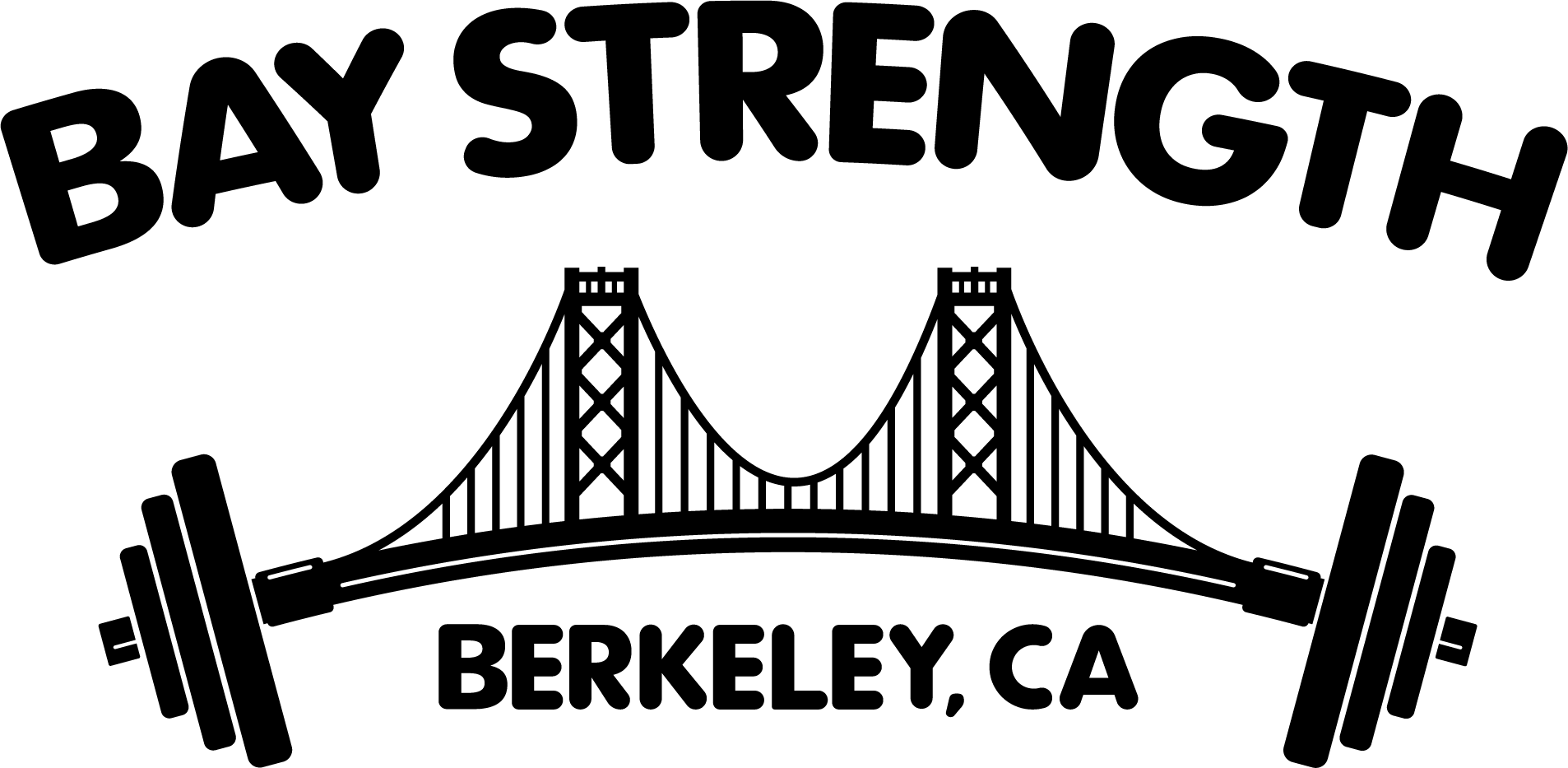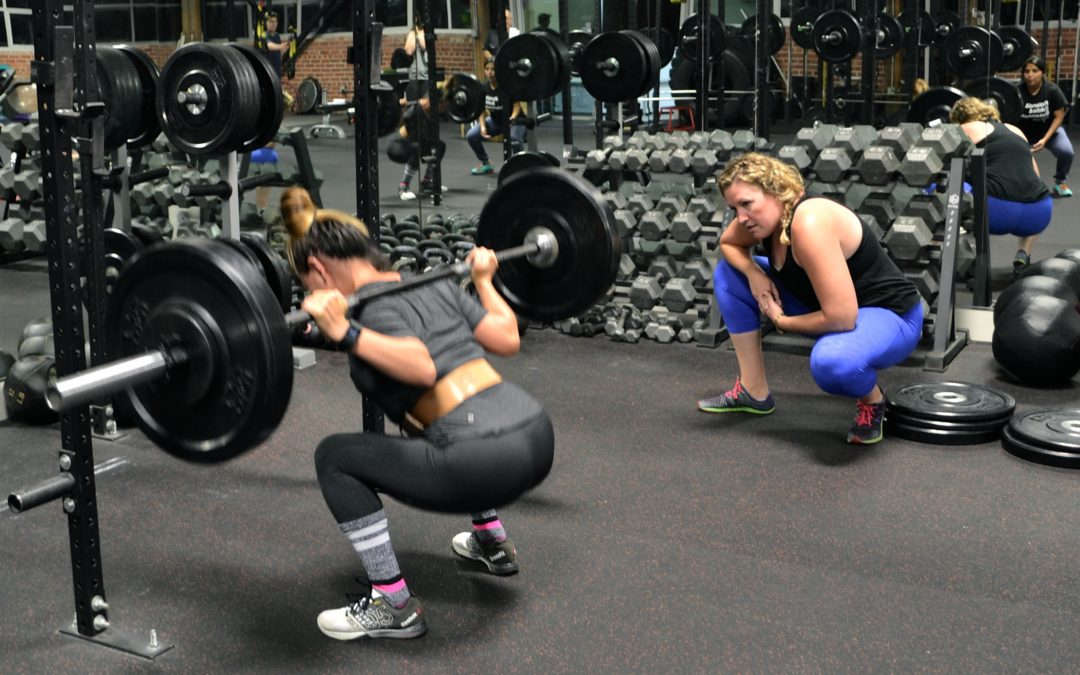Cell phone cameras have become a great training tool for many of you who are training without a coach. However, when you first start watching yourself move on video, it can be difficult to identify form flaws, and even more tricky to know which things to correct first.
In general, when you first start looking at video, positions (what you see whenever you pause the video) are easier to see than movement. Identifying whether you are high at the bottom of a squat is an easier thing to do than identifying the correct use of hip drive. Identifying whether your femurs are in line with your feet is an easier task than identifying whether your knees stopped traveling forward at the right time on the descent.
It’s also important to understand which things to fix first. Since we can only focus on one or two things at a time, it’s good to know, for example, that if you see yourself squatting high and on your toes, that you should fix those things before worrying about your bent wrists.
Every positional instruction listed below is covered extensively in Starting Strength: Basic Barbell Training by Mark Rippetoe. This article will only be useful to those of you who have read it. Once you have read the book, however, it can be difficult to organize all of the information in it, especially when you are first starting your training.
Below are some things to look for in each lift. You should be able to spot them on your own video, provided that you shoot the video at the correct angle. Here is a link to some suggestions for filming form checks from the Starting Strength Staff Coaches forum.
Squat
- The spine must be held rigid in lumbar and thoracic extension.
- The bar must stay directly over the middle of the foot.
- The feet will be flat on the ground at the correct angle.
- The thighs must remain parallel to the angle of the feet at all times.
- At the bottom: The hip crease must slightly lower than the top of the patella.
Press
1. Starting Position
- Knees, hips and lumbar and thoracic spine are all locked in extension.
- Elbows are in front of the bar.
- Forearms are vertical, as seen from the front.
- Bar rests towards the base of the palm of the hands, not the fingers.
2. At the top of the press
- Knees, hips and lumbar and thoracic spine are all locked in extension.
- Scapulue are elevated (shoulders are shrugged up).
- Bar is directly over the glenohumeral joint – the shoulder joint – and directly over the middle of the foot.
Deadlift
1. Starting Position
- The shoulders must be in front of the bar, with an arm angle relative to the floor of 7-10 percent.
- The bar must be directly over the middle of the foot.
- The spine must be held rigid in lumbar and thoracic extension.
2. The Pull
- The spine must be held rigid in lumbar and thoracic extension.
- The bar must stay directly over the middle of the foot and against the legs at all times.
- At the lockout, the hips must be fully extended.
Bench Press
1. The Top
- The bar is held directly over the glenohumeral joints (the shoulders).
- The elbows must be locked in full extension.
- The shoulder blades are in retraction against the bench.
- The chest is rotated up, with the back fully arched and the butt on the bench.
2. The Bottom
- The bar must be in contact with the chest, below the clavicles.
- The forearms are vertical relative to the floor (a function of a moderate grip width).
- The humerus (upper arm) is in abduction, with an angle relative to the shoulder joint of no greater than 75 degrees.
- The shoulder blades are in retraction against the bench.
- The chest is rotated up, with the back fully arched and the butt on the bench.
Training your Eyes
Once you are able to see the positional aspects of each lift, the next thing to do is to train your eye to see movement. Great practice can be had by reading the Starting Strength Staff Coaches Forum. Watch the form checks, and don’t peek at the staff coaches’ answer until you’ve taken a stab at it first. Those of you who are seriously considering becoming a coach should watch this lecture by Starting Strength Staff Coach Stef Bradford. Below are some important aspects of each lift. For those of you who become interested in coaching others, you will need to learn to see these things.
Squat: hip drive and the timing of knee and hip flexion, the control of the eccentric, the rebound at the bottom (stretch reflex) and knee slide.
Press: bar path, timing, and the aggressive bounce off the hips.
Deadlift: smooth acceleration off the floor and the timing of the extension of the knee and hip.
Bench Press: Control of the eccentric and the rebound (stretch reflex) at the bottom, and bar path (a tiny bit of vertical movement off the chest creates a moment arm).
Asymmetry
Make sure you film at least one set directly from the front or the back to catch any asymmetry. Watch for your hips shifting to one side, or a twist in the torso. If there is an asymmetry in your movement, it is more likely to happen during the concentric portion (the ascent) than the eccentric (the descent) but watch for both. If you are filming the bench press for this reason, see if you can get a friend to video you from the spotter’s position and watch for your shoulders and hips coming together more closely on one side than the other.
When you pause your video, or look at it in slow motion, do not be distracted by the angle of the bar relative to the floor. Most humans are slightly asymmetrical and the bar creates a long line which magnifies any deviation from the perfectly level. However, we are not hanging pictures, we are training a living system. It is more instructive to look at the relationship between legs, hips, and shoulders during the performance of the lift. You can correct a movement problem, and correcting your movement problem under a load is the best way to deal with asymmetry.
Correcting flaws
Correcting the flaws that you see in your lifts is beyond the scope of this article. When you reach a point where you are not capable of making the changes you want in your movement, reaching out to a coach is a great idea. We all need coaching from time to time – even coaches are subject to form creep, and there is no substitute for having someone yell the right thing at the right time when you’re working at your limit!


Good advice, a great post